MAKOTO KEDOUIN’s One-Person Indie Game Workshop

Made with RPG Developer Bakin – Dev Blog #5
Please enjoy this record of KEDOUIN’s creative days—full of trials, meanderings, and delightful chaos.
MAKOTO KEDOUIN
He is a Japanese game creator and scenario writer. He was born in Amagasaki City, Hyogo Prefecture. He first gained attention as a student with his self-made horror game Corpse Party, which began as a doujin (indie) project and was later developed into a commercial title.
The series has since expanded beyond games into novels, drama CDs, anime, and more, earning critical acclaim both in Japan and internationally.
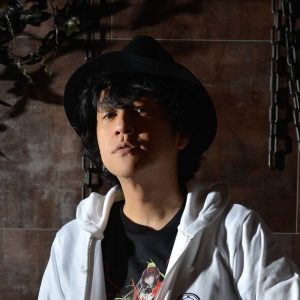
Day 83 of Development — in November – A New Obsession: Camera Work
Our little project—“Use RPG Developer Bakin (hereafter Bakin) to make some kind of interesting sample game in a limited time!”—is well underway.
And suddenly, I’d like to share something I’ve recently become obsessed with!
It’s Bakin’s camera work! Woo-hoo! 👍👍👍
Now that development has reached Day 80, my “creative delirium mode” is hitting its peak, and after sinking into pixel art, I’ve now fallen headfirst into a brand-new swamp: camera work.

A highly capable camera tool. The technical terms can be confusing at first, but once you start experimenting, everything quickly makes sense.
In past 2D tools, fixed camera angles were the norm. But Bakin is 3D. Tilt the angle by three degrees, adjust the movement just a little—and the same map looks like an entirely different production.
Today I was working on a scene in a “Forest Spring,” and as I kept adding new entries to the camera list—tweaking depth of field for distant blur, tuning lighting, chromatic aberration, overall lens angle…
I kept falling into an endless loop of:
“This isn’t it… No, maybe this? …Wait, no…”
Then I learned I could add as many keyframes as I wanted and animate the camera itself.
Which, of course, led me straight into experimenting with cinematic cuts.
Naturally, I failed repeatedly—but as I finally got the hang of it, the next obsession struck:
“I want the camera movement to be silky smooth!”
And from there, the layers of obsession just kept piling on.
Man, it’s fun. Like, really fun.
The result?
It took me a full two days just to build one important story scene that serves as a major narrative key in the game.
But dramatic scenes really do change emotionally with combinations of close-ups, wide shots, overheads, roll angles…
Even inserting a tiny 0.5-second pause before a monologue, and aligning a single camera frame to it, can completely change how the character’s feelings are read.
Of course I want to get it right. I should get it right. I refuse to compromise.
But there’s no time!
To make things worse, Mr. Sugiuchi from the team keeps asking every single day:
“How’s the progress today?”
The pressure is real…!
—What will you do, KEDOUIN!?
……Hmm? No, the answer is obvious.
—I just won’t sleep.
(Do not try this at home. Performed by a highly trained professional.)
And so, I completed the perfect one-cut scene.
Even I found myself admiring it, mumbling with my half-asleep brain, “Maybe I’m actually suited for scripting and direction…”
And then I dove straight into the next swamp—the next event scene waiting for me.
Day 87 of Development — in November – A Sneak Peek at the Protagonist’s Home
In many sample games, the story often begins in the protagonist’s home.
Maybe that’s why I can’t help but pour extra energy into designing this “most important map.”
Too spacious and moving around becomes tedious; too cramped and it feels unsatisfying.
Since this time I added a dash mechanic, I’m aiming for that perfect balance where exploring the whole place feels good as you move through it.
So there I was, muttering things like,
“Do I need this room? Is a bathroom essential? …Yeah, of course it is!”
—repeating these creepy monologues to myself in a stylish café (working on my laptop), completely absorbed in building this mansion.

The head maid’s room. You can inspect various objects throughout the area.
And this time, the plan includes “a whole bunch of maid NPCs,” which is basically a dream spec shared by both Mr. Sugiuchi and me.
Should each one have different lines when you pass them in the hallway?
How much individuality do I give them?
Once I start fussing over these details, there’s no going back.
At the center of all this is the head maid—a strong-willed girl who’s harsh toward the protagonist but secretly cares about her more than anyone.
To create that kind of character, I kept staring at her expression variations, imagining myself wearing the same expression as I came up with her lines, then moved on to crafting the scene direction… and before I knew it, it was already way past midnight again.
Riding that momentum, I even started creating a small “mini-game-style event.”
What was supposed to be “just make the mansion reasonable” has turned into me going absolutely all-in.
I probably even had the “I did it!” look on my face.
Is this the right path…?
Or have I once again thrown myself headfirst into yet another swamp?
Time is running out, and yet my desire to refine every detail only grows.
Day 90 of Development — in November – [Series] Come on Over to KEDOUIN’s Crossing
Let me introduce one of the friends living in KEDOUIN’s Haunted House (a.k.a. the Collection Room).
From Mezco Toyz’s adorable yet dark Living Dead Dolls series—hereafter LDD—this is my custom Ayumi Shinozaki LDD.
I dressed her in the Corpse Party school uniform and styled her hair to match the character.
With help from Picnic, a creator of original doll clothing, she became one of the cutest dolls in my entire collection.
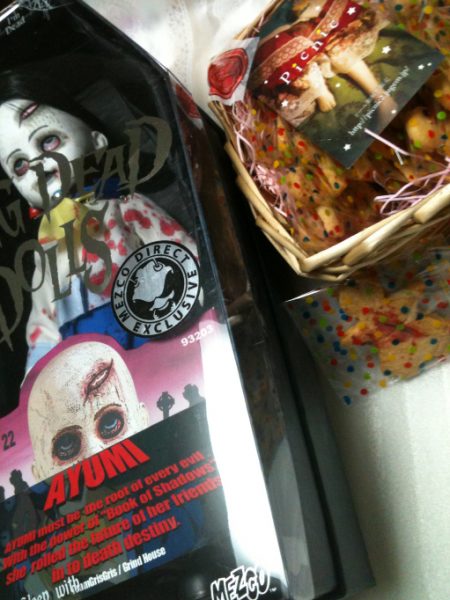
I even made a belt wrapper for her! — This is a custom piece.
As the name suggests, LDD is a series of charming yet terrifying zombie dolls, each coming with its own wonderfully tasteless (I say that with love!) certificate describing its cause of death.
There are so many fascinating dolls in the lineup, so please look them up and welcome your favorite little zombie into your home.
I highly recommend falling into this particular swamp!
Day 94 of Development — in November – Continuing: Let’s Make a Mini-Game
My main work is, broadly speaking, writing “readable scenarios.” I’m not a “mini-game craftsman,” a person with that special flair and clever creativity required for mini-games.
…Not really.
But then Mr. Sugiuchi saw my “mansion mini-game-style event” and started leaning in with these strangely sparkling eyes.
“This is fun. I want more of it (side glance, side glance)”
…A blatant form of pressure. Total pressure.
—Harassment!
For a brief moment, that word even crossed my mind. But of course, it wasn’t that. Receiving “feedback” to make something more fun is a way to feel the warmth of empathy in indie game development, which can otherwise feel so lonely.
Suddenly, I was fired up. Everyone, I highly recommend finding someone nearby who will “watch” and “praise” your work.
So, KEDOUIN faced the “harassment.”
Saying “I can’t” wasn’t an option. Couldn’t say it. So… I had to do it.
That said, mini-games come in endless genres.
Action? Rhythm? Exploration?
After tossing around several ideas, I finally settled on creating a “little puzzle.”
—But that turned out to be hard.
After all, I’m a humanities guy (totally irrelevant, of course). Simple, short, and fun—such a convenient puzzle isn’t exactly easy to invent…
Time for the last resort.
Team leader Mr. Nagai—summoned!
In no time, I received precise advice and the mini-game finally started to take shape.
—Mr. Nagai, you are a god.
And so, the new mini-game is finally complete.
Please give it a try in the main game. Enjoy!
Day 99 of Development — in November – Controlling the World’s Will: Rendering Settings
The amazing thing about Bakin is that even the same map can look completely different with just a single change in rendering settings.
Adjust the shadow intensity and the atmosphere becomes heavy and oppressive. Crank up the bloom and it turns dreamy. Increase the fog and suddenly everything feels ominous…
A daytime forest can become a “gentle otherworld” or a “cursed forest.” The possibilities for visual storytelling are endless.
In this project, the characters are cute pixel art, but the story is relatively serious.
It’s the same narrative grammar as Corpse Party.
So there can be no compromise on the world’s “atmosphere.”
I twist and tweak every rendering option—fog, shadows, ambient light, bloom, depth of field—searching for the perfect mood. It’s a journey of obsession.
Even if I think, “This is it!” late at night, the next morning I often find myself thinking, “Hmm… I want it a little darker…” or “No, maybe I want more clarity instead…?”
And just like that, I’m dragged into a new swamp.
Especially balancing fog color and ambient light intensity has gone beyond a swamp—it’s practically an ocean. Even a small change can make it feel like an entirely different game.
This feature lets me express the meaning, the intent, and the very essence of the world itself.
Before I knew it, I realized I’d spent more time adjusting rendering settings than implementing the main events…!
But all of this is so that players truly feel that the protagonist is living in this world the moment they appear.
Today, once again, I wrestle with every rendering parameter!
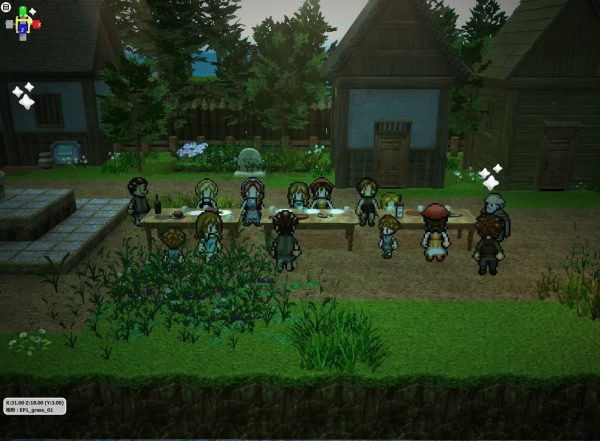
An unsettling meal
Day 100 of Development — in November – Dialogue
They say a work of art doesn’t need the author’s message, and that it’s best if no trace of the creator’s feelings lingers.
So I’ll quietly share this only with you, the reader of this series: creating a game—or any work of art—is in many ways like a dialogue between the creator and the audience.
How will you feel about this world? How deeply will you read between the lines? Will you come to like this character—or perhaps despise them?
This time as well, I’ve packed countless riddles and inverted emotions into words, tossing them out into the world.
With REINES DU SABBAT Queen of Sacrifice, I hope the hearts of those who receive it will stir, even just a little, in a dramatic way.
It will be in your hands soon—please look forward to it!

Break Through! Master Up!
MAKOTO KEDOUIN’s One-Person Indie Game Workshop | Made with RPG Developer Bakin – Dev Blog #5
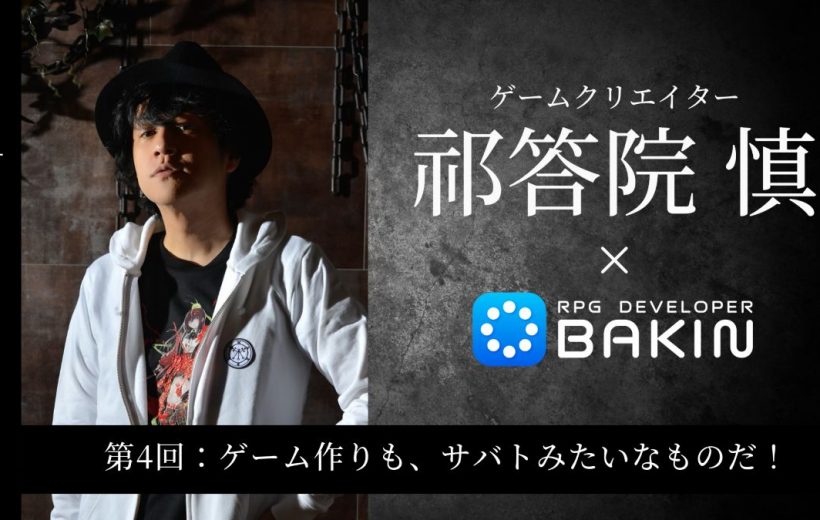
Game Creation — It’s a Lot Like SABBAT!
MAKOTO KEDOUIN’s One-Person Indie Game Workshop Made with RPG Developer Bakin – Dev Blog #4
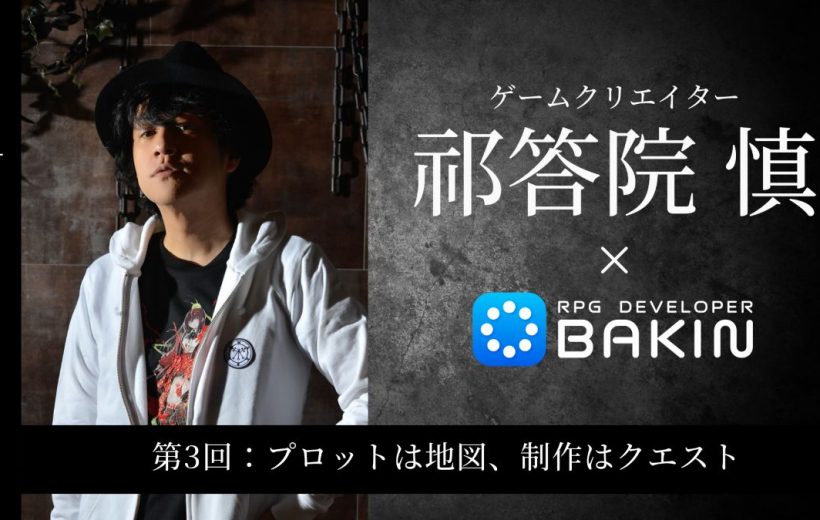
The Plot is the Map, Creation is the Quest — Tracing the Journey Towards the Rebuild of 'REINES DU SABBAT'
MAKOTO KEDOUIN’s One-Person Indie Game Workshop Made with RPG Developer Bakin – Dev Blog #3


